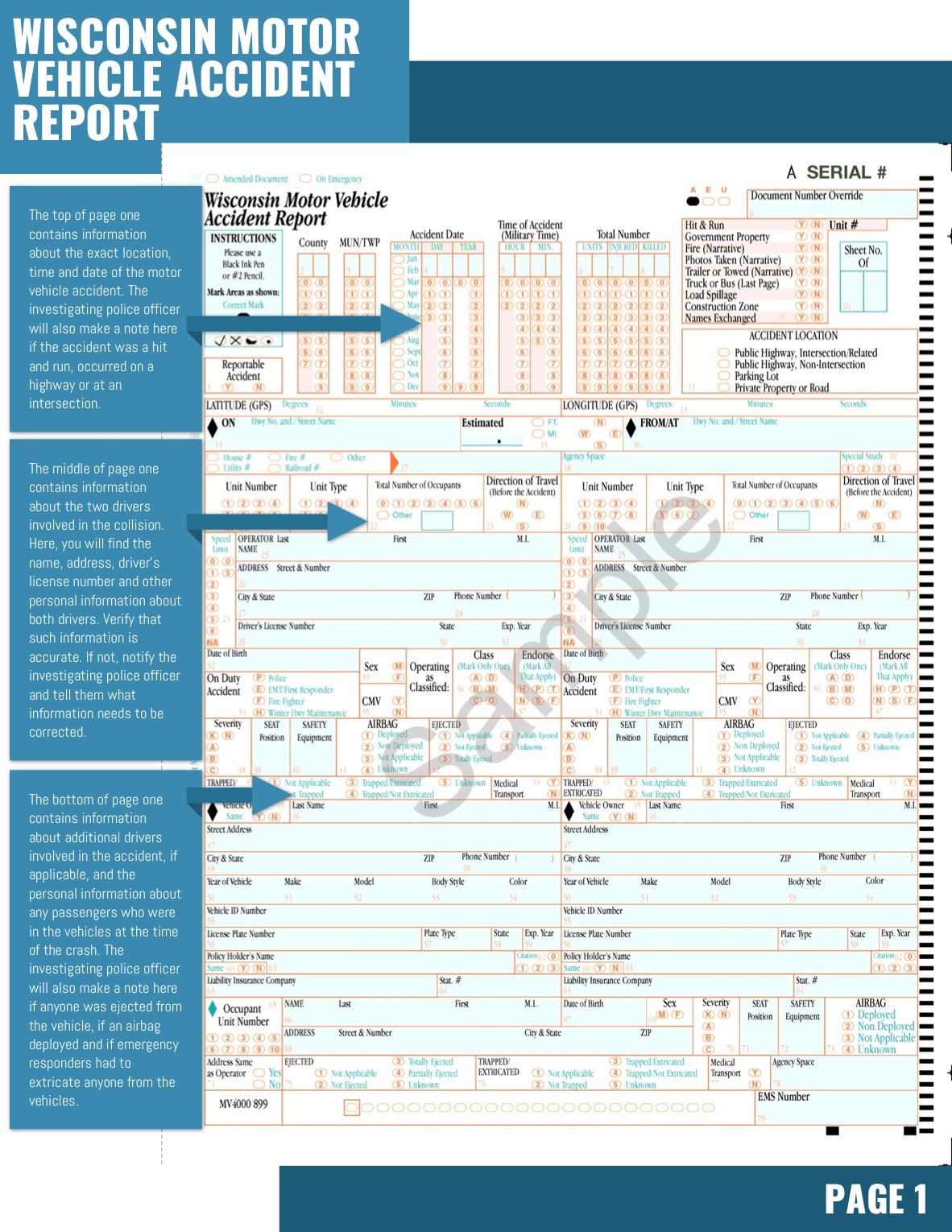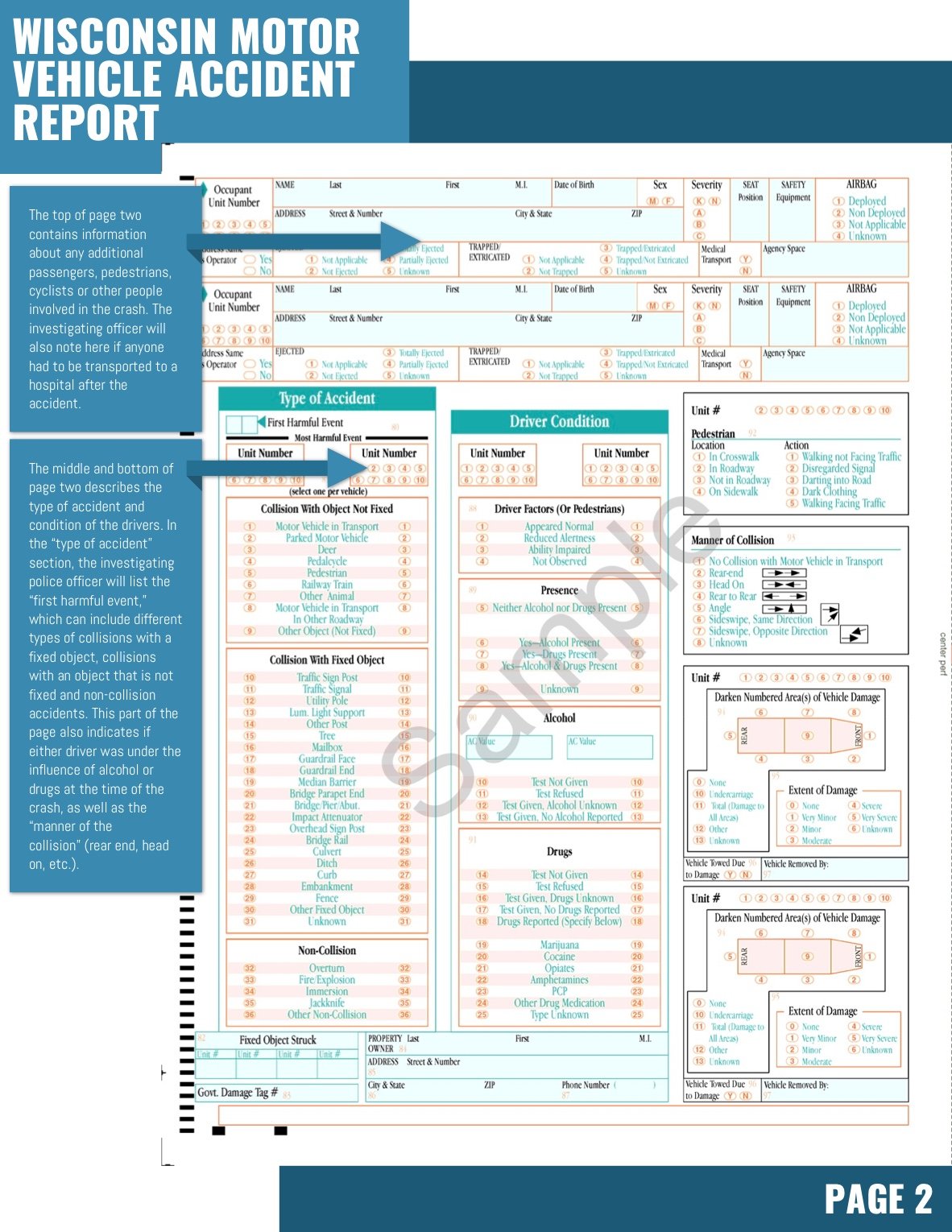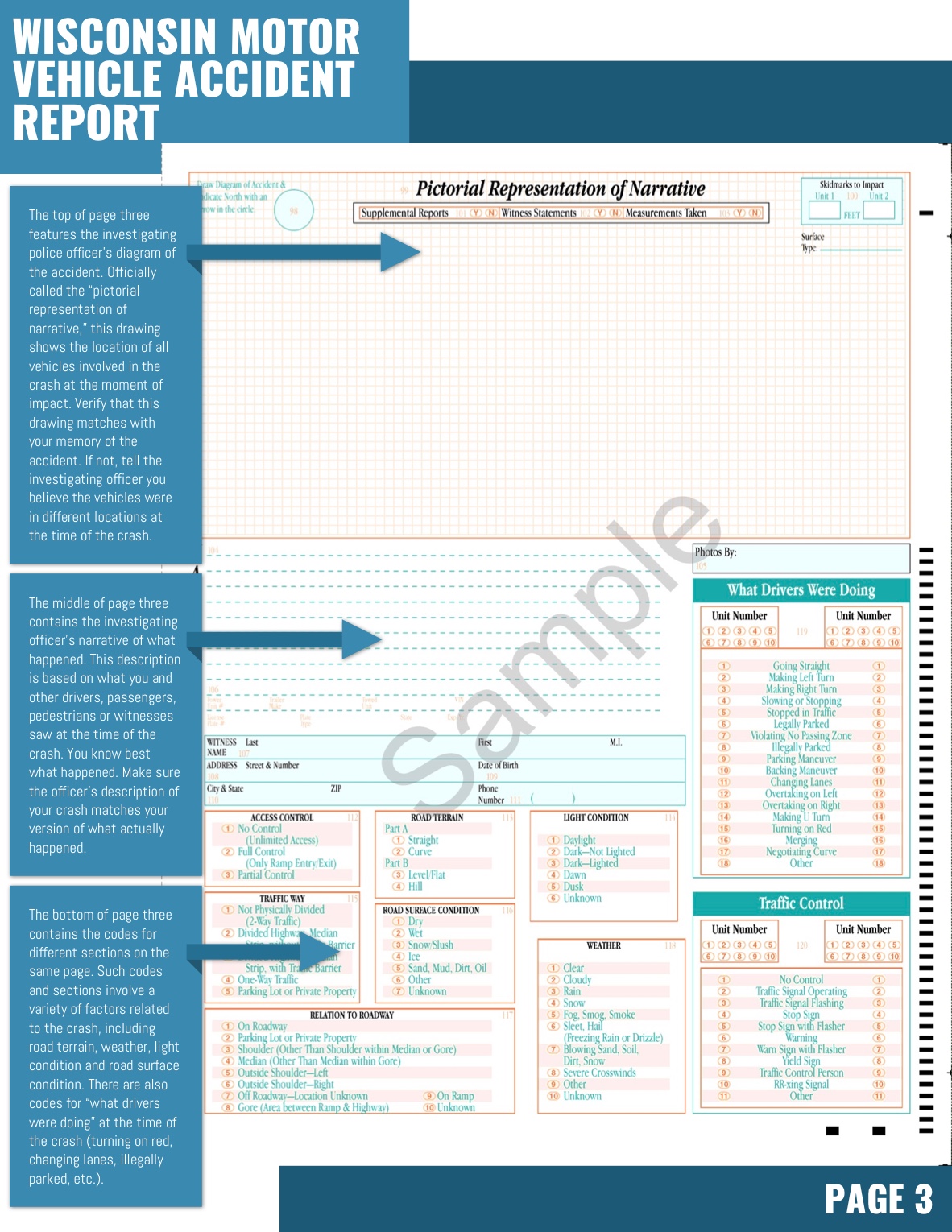In a divorce, the laws of equitable distribution distinguish marital property from separate property. Technically, only marital property, that is, proper...
In Wisconsin, every serious motor vehicle accident investigated by police normally has an official accident report. This report is officially called the “Wisconsin Motor Vehicle Accident Report.” In most cases, either a local police officer or state trooper from the Wisconsin State Patrol will investigate the accident and fill out a report.
Insurance companies for drivers involved in the crash or anyone else who was injured (passengers, pedestrians, etc.) carefully review these reports when determining who was at fault and how much to financially compensate injury victims. That’s why it’s critical that anyone involved in a car accident in Wisconsin knows how to read their accident report. Otherwise, you might not obtain the financial compensation you deserve for your crash.
Wisconsin Motor Vehicle Accident Report

Page 1
The top of page one contains information about the exact location, time and date of the motor vehicle accident. The investigating police officer will also make a note here if the accident was a hit and run, occurred on a highway or at an intersection.
Click here to download a printable PDF of How To Read Your Wisconsin Car Accident Report.
The middle of page one contains information about the two drivers involved in the collision. Here, you will find the name, address, driver’s license number and other personal information about both drivers. Verify that such information is accurate. If not, notify the investigating police officer and tell them what information needs to be corrected.
The bottom of page one contains information about additional drivers involved in the accident, if applicable, and the personal information about any passengers who were in the vehicles at the time of the crash. The investigating police officer will also make a note here if anyone was ejected from the vehicle, if an airbag deployed and if emergency responders had to extricate anyone from the vehicles.

Page 2
The top of page two contains information about any additional passengers, pedestrians, cyclists or other people involved in the crash. The investigating officer will also note here if anyone had to be transported to a hospital after the accident.
The middle and bottom of page two describes the type of accident and condition of the drivers.
In the “type of accident” section, the investigating police officer will list the “first harmful event,” which can include different types of collisions with a fixed object, collisions with an object that is not fixed and non-collision accidents. This part of the page also indicates if either driver was under the influence of alcohol or drugs at the time of the crash, as well as the “manner of the collision” (rear end, head on, etc.).

Page 3
The top of page three features the investigating police officer’s diagram of the accident. Officially called the “pictorial representation of narrative,” this drawing shows the location of all vehicles involved in the crash at the moment of impact. Verify that this drawing matches with your memory of the accident. If not, tell the investigating officer you believe the vehicles were in different locations at the time of the crash.
The middle of page three contains the investigating officer’s narrative of what happened. This description is based on what you and other drivers, passengers, pedestrians or witnesses saw at the time of the crash. You know best what happened. Make sure the officer’s description of your crash matches your version of what happened.
The bottom of page three contains the codes for different sections on the same page. Such codes and sections involve a variety of factors related to the crash, including road terrain, weather, light condition and road surface condition. There are also codes for “what drivers were doing” at the time of the crash (turning on red, changing lanes, illegally parked, etc.).

Page 4
The top of page four includes the “officer’s opinion of possible contributing factors.” The contributing factors are divided into three, distinct areas – “driver factors,” “vehicle factors” and “highway factors.” Driver factors include “exceeding speed limit,” “inattentive driving” and “following too close.” Vehicle factors include any mechanical problems with the brake system, tires or other parts of the vehicle. Highway factors include snow or ice on the road, loose gravel or other debris. Insurance companies carefully look at such information when determining who was at fault in the crash. You should pay close attention to such information as well. You will also find the investigating police officer’s name and contact information if you need to reach them for any reason.
The bottom of page four includes information about any commercial vehicles involved in the crash. This may include buses, tractor-trailers, log trucks or other, large commercial vehicles.
You can also find the commercial vehicle company’s name, address and contact information, as well as whether the commercial vehicle was carrying hazardous materials at the time of the crash. All of this information can be extremely useful if you or your attorney is trying to get in touch with the commercial vehicle company after your accident.





